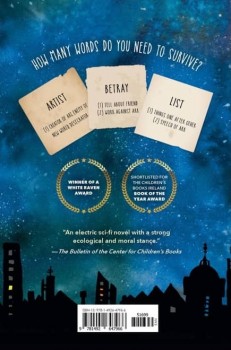
Parts of the story, such as when a member of the community is banished, beaten, killed, or left alone to die, could be considered scary or inhumane. As they see Letta stand up for what she believes in, students will realize the power that they have to express themselves, choose and build relationships, and influence change through the use of speech and collective organization. Having such a relatable character in a strange world allows for a personal connection, which is critical for engagement.

This book allows students into Letta’s mind to see her indecision, value of kindness, and the ways that her actions impact others around her.


For example, students may consider the impacts of their own actions on the environment in a different way as they are given a glimpse of a possible proposed outcome to environmental degradation, and may take actions of their own to contribute to a healthier planet. Along the way, Letta discovers secrets, lies, allies, and resistance groups, and must navigate her way safely as she determines what she believes in and what action she will take.įantasy books have made a strong impact in the children’s literature world recently, and this book allows for a connection to be drawn between the realities that are unlike our own in many ways, but still provide insight into some phenomena or practices that we experience in our own lives. But when she comes into contact with someone who lives outside of the gated community, she begins to question the mysterious circumstances of her master’s disappearance and Noa’s intentions for the future of humankind. The leader of her community, Noa, has restricted the use of speech to 500 important words because he believes words are a harmful distraction to reality.

She is an apprentice to the wordsmith, but when he disappears, Letta is put in charge of managing words. In a post-environmental apocalypse world, Letta is a 12-year old girl who finds herself in a role with much more responsibility than she has ever experienced before.


 0 kommentar(er)
0 kommentar(er)
